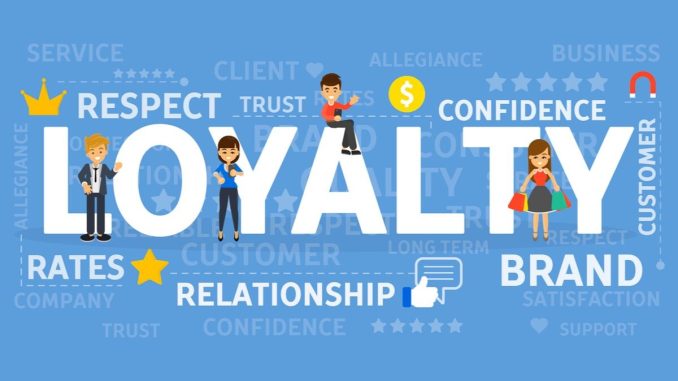
In the bustling marketplace, where new businesses emerge daily and competition for attention is fierce, the initial sale often feels like the pinnacle of achievement. Yet, savvy entrepreneurs understand that attracting a customer once is merely the opening act. The true measure of a business’s health and long-term viability lies in its ability to cultivate loyalty, transforming one-time purchasers into repeat customers and, ultimately, into fervent advocates. This shift from transactional interactions to enduring relationships is not accidental; it’s the result of deliberate, well-executed strategies designed to keep customers coming back, time and time again.
—
### The Enduring Value of Retention
The financial rationale for prioritizing customer retention is compelling. Acquiring a new customer often costs significantly more than retaining an existing one. Loyal customers tend to spend more over their lifetime, are less sensitive to price fluctuations, and become organic marketers for your brand through word-of-mouth referrals. Imagine a local coffee shop. While enticing new patrons with promotions is vital, the regular who buys a latte every morning contributes far more to the shop’s sustained revenue than a tourist who visits once. This focus on repeat business cultivates a stable revenue stream and builds a resilient customer base that can withstand market fluctuations.
—
### Exceptional Customer Experience: The Foundation
At the heart of any successful retention strategy lies an **exceptional customer experience**. This isn’t just about problem-solving; it’s about every touchpoint, from the initial discovery to post-purchase support. When customers consistently encounter ease, efficiency, and genuine care, they develop a positive emotional connection with your brand. Think of an online retailer that offers not just quality products but also intuitive website navigation, clear communication about shipping, and hassle-free returns. These seamless interactions build trust and reduce friction, making it simple and enjoyable for customers to return. Conversely, even a minor frustration—a confusing checkout process or an unhelpful support agent—can be enough to send a customer seeking alternatives. Prioritizing consistent excellence across the entire customer journey is non-negotiable for fostering loyalty.
—
### Personalized Engagement: Beyond the Sale
Once the initial transaction is complete, the opportunity for sustained engagement truly begins. **Personalization** plays a crucial role in making customers feel valued and understood. This extends beyond simply using their name in an email. It involves tailoring communications, recommendations, and even offers based on their past purchase history, Browse behavior, and stated preferences. A pet supply store, for instance, might send personalized reminders for food refills based on a pet’s size and breed, or suggest new toys that align with previous purchases. This level of attentiveness demonstrates that the business sees them as an individual, not just another number, fostering a deeper sense of connection and relevance.
—
### Loyalty Programs: Rewarding Devotion
**Loyalty programs** remain a classic and highly effective strategy for encouraging repeat business. These programs, whether point-based, tiered, or subscription-based, provide tangible incentives for customers to continue engaging with your brand. The key is to design programs that offer genuine value and are easy to understand and use. A tiered system, for example, might reward customers with escalating benefits—such as exclusive discounts, early access to new products, or dedicated customer support—as their spending or engagement increases. This gamification of loyalty creates a sense of achievement and provides concrete reasons for customers to choose your business over competitors. The cumulative value of these rewards motivates continued patronage, making customers feel appreciated for their ongoing support.
—
### Proactive Communication and Value Addition
Staying connected with customers in meaningful ways, even outside of direct sales cycles, is another powerful retention tool. This involves **proactive communication that adds value**, not just pushes promotions. Share useful content related to your industry, provide tips and tricks for using your products, or offer insights that genuinely benefit your audience. A gardening supply company, for example, might send out seasonal planting guides, pest control tips, or ideas for garden design. This positions your business as a trusted resource and expert, keeping your brand top-of-mind and reinforcing your value proposition, even when customers aren’t in an immediate buying mood. When they do need something, your business will be their first thought.
—
### Soliciting and Acting on Feedback
Finally, truly committed businesses don’t just hope customers will return; they actively solicit **feedback** and, critically, act upon it. This involves sending post-purchase surveys, encouraging reviews, and providing accessible channels for complaints and suggestions. More importantly, it means demonstrating that you are listening. When customers see their feedback being acknowledged and leading to tangible improvements, it reinforces their sense of value and their belief in your commitment to excellence. Turning a complaint into a positive resolution, as discussed previously, can transform a disgruntled customer into a staunch advocate. This continuous loop of feedback and improvement builds profound trust and shows customers that their experience truly matters, solidifying their reason to keep coming back.
In conclusion, fostering customer loyalty in today’s competitive environment is a multi-faceted endeavor that extends far beyond the initial transaction. By prioritizing an exceptional customer experience, embracing personalization, implementing rewarding loyalty programs, engaging in proactive value-driven communication, and diligently acting on customer feedback, businesses can build deep, lasting relationships. These strategic efforts not only secure repeat business and stable revenue but also cultivate a powerful network of brand advocates, transforming satisfied customers into the very engine of sustained growth and enduring success.